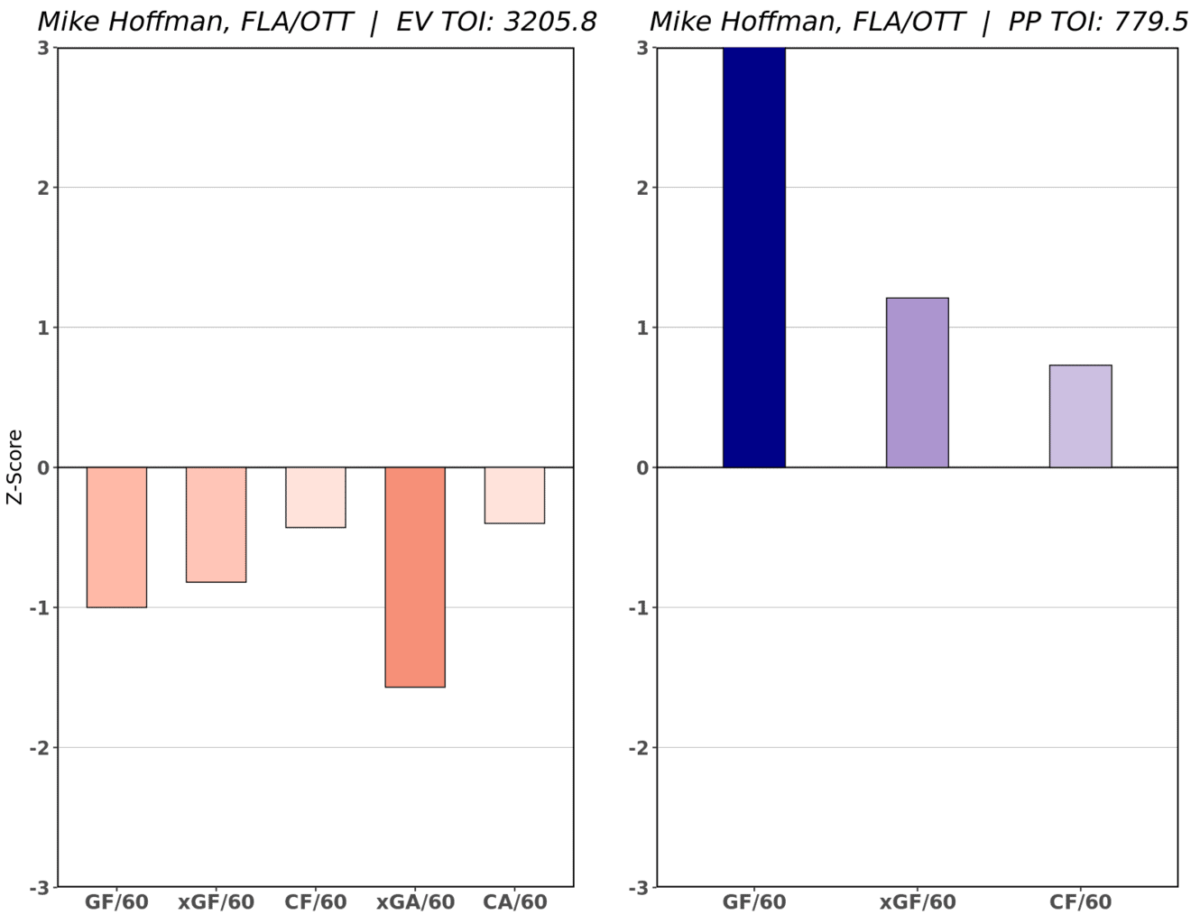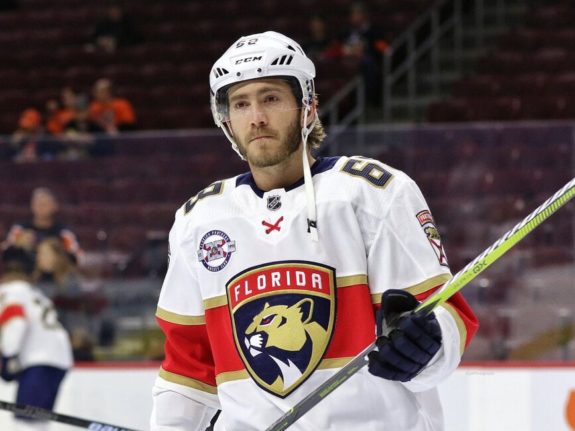Free agency is a little over a month away, and the New Jersey Devils will have just over $26 million in cap space to spend. Though it’s unlikely new general manager Tom Fitzgerald goes wild and spends to the cap, he’ll still have to be smart spending the team’s money when signing any unrestricted free agent.
And that becomes most important when looking at the top UFAs. One of the big-name UFAs in this year’s class is Florida Panthers’ left-winger Mike Hoffman, who had 29 goals and 59 points in 69 games this season. The Devils have a clear need for another top-six, scoring winger. His counting totals hint he could fill that need, but there’s strong evidence showing the Devils give serious pause to doing so. Let’s dig into the reasons why.
Hoffman May Be Overvalued
Hoffman has been one of the most consistent scorers in the NHL over the last three seasons. He’s finished with 55-plus points in each, with a 36-goal, 70-point season in 2018-19. He’s also one of the top shooting threats in the league, as he has a 13.9% shooting percentage over the last two seasons.
Related: Devils Alumni Pave Way for South Korean Hockey
But there’s a pretty noticeable trend in how Hoffman racks up points. At even strength, he’s averaged 1.62 points per 60 minutes (points/60), which is the same is Derek Grant and Adam Henrique and just .01 less than Devils’ winger Kyle Palmieri. That’s all well and fine, but it’s not what you’d expect from someone who produces close to 60 points per 82 games.
So, how is Hoffman scoring so much? Over the last three seasons, he has 36 goals and 77 points on the power play. He has 185 points at all strengths over that stretch, so 41% of his production is coming with the man advantage.

That’s where problems begin to arise for Hoffman. Since Palmieri is on the Devils’ current roster, we’ll continue forward using him as an example. Between him and Hoffman, Palmieri is the far superior winger. His overall play is worth a goals above replacement (GAR) of 32.5 over the last three seasons, ranking him in the top 50 among NHL forwards. Hoffman’s GAR of 7.9 is the same as Matt Calvert, Thomas Vanek, and Nick Bjugstad’s and ranks 233rd in the league.
Hoffman is also not the even-strength player Palmieri is. His even-strength defense is worth a GAR of minus-9.1, while Palmieri’s is worth 5.5. Palmieri also adds more to his team’s even-strength offense, as it’s worth a GAR of 14.1 compared to Hoffman’s 3.1. And when looking at Hoffman’s RAPM chart, it shows a pretty distinct negative, two-way impact at even strength over the last three seasons.

You’ll notice Hoffman’s RAPM shows a positive impact on the power play. That’s easily the best part of his game. It isn’t even a stretch to say he’s an elite power play contributor. But his even-strength play raises major red flags and raises doubts about giving him a long-term deal.
Signing Hoffman Not Ideal Use of Cap Space
Because of the league shut down due to COVID-19, there’s been plenty of time to talk about the Devils “weaponizing cap space.” They’re going to have plenty of opportunities to do so. But it’s going to come on the trade market rather than in free agency.
And given where the Devils are as a team, going wild in free agency is not the way to go. Hoffman is going to get a long-term deal worth a lot of money, perhaps around $6-7 million annually. For someone who’ll be 31 years old at the start of next season, the money would be best invested elsewhere.
Related: Devils’ Trading Partners: Seeking Out Left-Handed Blueliners
For example, if the Devils are thinking about giving $6-7 million a year to Hoffman, they might as well re-sign Palmieri — who’s entering the last year of his deal — to a long-term extension. Palmieri offers more than Hoffman at even-strength, both offensively and defensively. And as good as Hoffman is on the power play, Palmieri is not far behind him.
Plus, the ability to weaponize cap space becomes a lot harder for the Devils by signing Hoffman since he’ll take up a large percentage of their salary cap. That should be money they use to acquire a player from a cap-strapped team like the St. Louis Blues or Tampa Bay Lightning.

At the end of the day, there aren’t a lot of positives to the Devils signing Hoffman. Fitzgerald has said he wants to build a team similar in age to Nico Hischier (21 years old) and Jack Hughes (19 years old). Hoffman is on the wrong side of 30, so that doesn’t fit into Fitzgerald’s plan. His value is as a power play specialist at this point in his career, which is not the type of player the Devils should be giving $6-7 million annually.
If they were one player away from being Stanley Cup contenders, then maybe there’d be an argument for adding Hoffman. They’re not even close to that point, so it’s best to stay well clear of a player whose new deal will likely create salary cap headaches down the road, something a rebuilding team like the Devils must avoid.
* * *
Advanced stats from Evolving Hockey, Natural Stat Trick